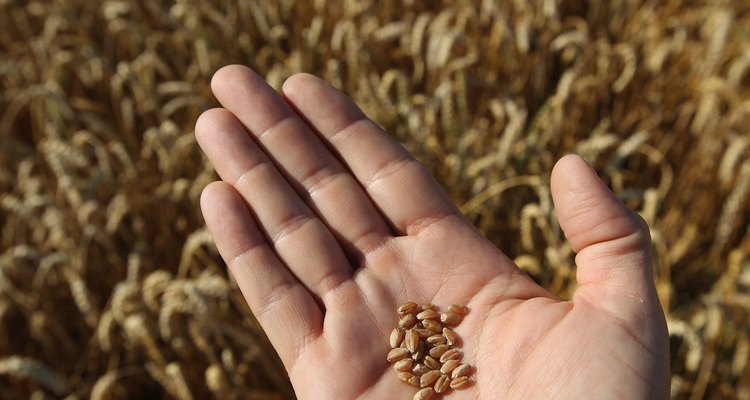
Sean Gallup/Getty Images News/Getty Images
From field to flour, wheat is transformed into a shelf-stable product through processing. The intricate series of steps, which is both time-tested and highly scientific, begins the moment that the grain is harvested and transported to a processing facility. Through modern technology and processing procedures, the individual kernels are stored, separated, cleaned, ground, bleached, enriched and/or fortified before being stored once more for distribution. Once complete, the processed flour is used is to make a wide range of foods, including breads, pasta and pastries.
Delivery and Testing
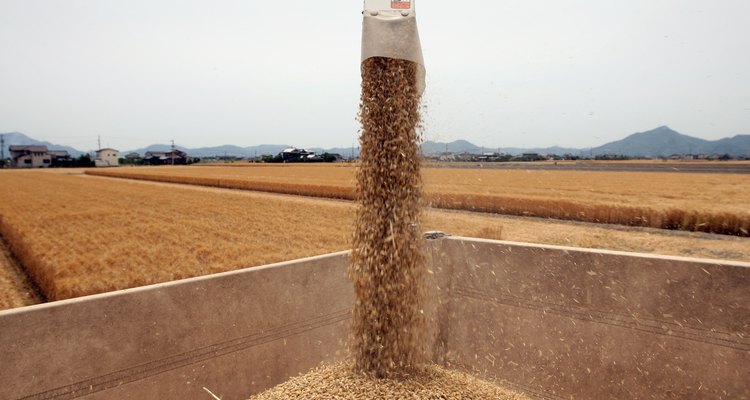
Buddhika Weerasinghe/Getty Images News/Getty Images
Before wheat processing can begin, wheat has a sometimes-long journey from the field to processing plant. It is hauled from its place of origin in covered trucks or rail cars. In some cases it travels hundreds of miles; in other cases, from one side of town to another. Upon arrival it is inspected and sampled for moisture content, test weight, unfit kernels and foreign material. Based on the results from these tests, it is determined how the wheat is treated, handled and stored until processing. The wheat is moved to silos for storage, where heat and moisture control keep it fresh until the time of processing.
The Cleaning House
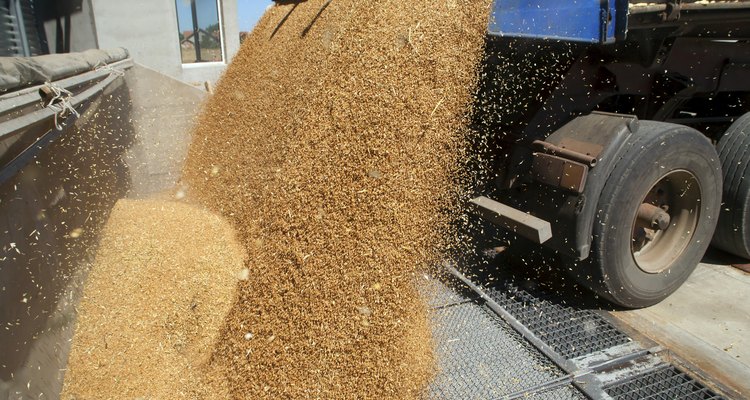
jovanjaric/iStock/Getty Images
The grain begins the processing journey by entering the set of machines that clean it, called the cleaning house. Made up of as many as 6 steps, this process removes foreign matter that may be in the wheat, as well as scours its surface to prepare it for processing. This process uses a magnetic separator, separator, aspirator and de-stoner to remove all types and sizes of foreign matter. The grains are then separated based on size; with large, small and misshapen grains being removed and discarded. The scourer then removes the outer husk from the wheat and the impact entoleter uses centrifugal force to break apart unsound kernels of wheat before processing.
Tempering and Grinding the Wheat
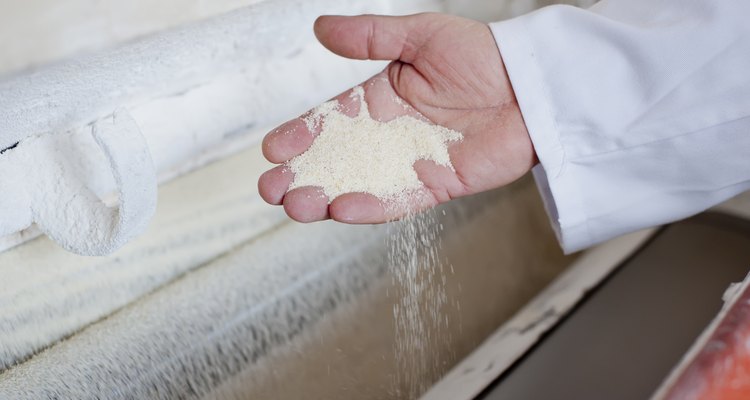
andjic/iStock/Getty Images
Wheat is made up of three elements -- the bran, endosperm and germ -- and how it is processed to separate these determines if the subsequent flour will be whole-wheat or white. Before milling takes place, the wheat is conditioned. Called tempering, moisture is added to the grains to both toughen the bran and relax the endosperm, allowing the kernel to separate more easily. This process takes from 6 to 24 hours, depending on the type of wheat and its moisture level. Wheat kernels are fed into a milling machine where they pass through several roller mills where the bran, endosperm and germ are separated and removed from the kernel. By the end of the process, the wheat is reduced to granular pieces free from bran and germ when making white flour. For whole-wheat flour, the bran, germ and endosperm are all ground together to create a whole-grain flour.
Sifting and Bleaching Flour

Justin Sullivan/Getty Images News/Getty Images
Large sifters then separate the smaller particles from the larger ones. Larger particles are then sent through a series of additional rollers to decrease their size and create a flour with grains of uniform size. At the end of the process, about 75 percent of each wheat kernel is is separated into flour. The flour is then typically bleached and enriched with vitamins such as iron; folic acid; and B vitamins riboflavin, niacin and thiamine. Once these processes are all complete, the flour is tested to ensure it meets the manufacturer's specifications. The produced white flour is most commonly used for yeast breads, cakes, pastries and pasta. Whole-wheat flour is also used for baking, but it creates denser items and is often teamed with white flour to improve texture when used in baking.
Related Articles

Bulgar Wheat Vs. Couscous

How to Replace Wheat
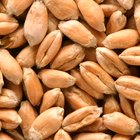
How to Cook Soft Wheat Berries

Can I Freeze Wheat Berries?
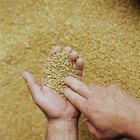
How to Ferment Grains
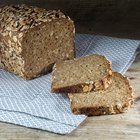
The Benefits of Essene Bread

Difference Between Red & White Wheat

What Is Amaranth Flour?

Coconut Oil Extraction Methods
Is Unbleached Flour the Same as ...
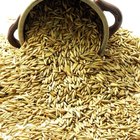
How to Store Oat Bran

Difference Between Red Rice & Brown Rice

How to Cook Fried Drummettes
Difference Between Short-Grain & ...
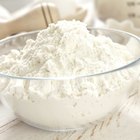
How to Store Flour

Alternative Flours to Make Pizza
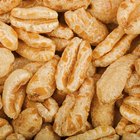
How to Cook With Kamut

What Additives Are in Flour?

If Flour Has Never Been Opened Can It ...
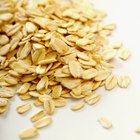
Baking With Oats Instead of Flour
Writer Bio
Based in Portland, Ore., Maxine Wallace is a writer with more than 12 years of experience. With a bachelor's degree in journalism and experience working on marketing campaigns for large media agencies, she is well-versed in multiple industries including the Internet, cooking, gardening, health, fitness, travel and holistic living.
Photo Credits
Sean Gallup/Getty Images News/Getty Images